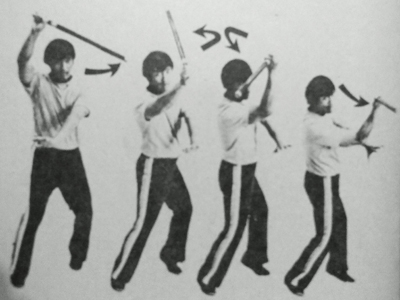I recall one escrima training session wherein my teacher had a difficulty articulating the nuances of one tricky technique. We ended up having a brief brain storming session on what name would help a student remember that technique quickly. At that moment, I had a sort of epiphany on the crucial importance of language in passing on martial arts skills.
Martial arts study is experiential in nature and language helps define our experience. Benjamin Lee Whorf put it aptly with the following words: “We dissect nature along lines laid down by our native language. Language is not simply a reporting device for experience but a defining framework for it.”
The founders of Neuro-Linguistic Programming (NLP) Richard Bandler and John Grinder, expressed the same line of thought when they wrote, “When we are using language as a representational system, we are creating a model of our experience,” (The Structure of Magic Vol. 1 1975).
My realization brought by that experience is that there is more to learning the native terminologies of a particular martial art than mere cultural appreciation. Knowing the native name of a particular technique and understanding its meaning will offer deeper insight to its nature and application.
This is going to be an exciting and worthwhile pursuit for practitioners of Filipino martial arts (FMA) considering the number of dialects in the Philippines not to mention the heavy presence of Spanish in arnis and escrima vocabulary.
For the purpose of illustration, I have picked the following terms from the FMA vocabulary to illustrate how the understanding of their meanings would give deeper comprehension on how these techniques are used. I chose these terminologies because of the richness of the imagery and the kinesthetic feel they evoke.
KAYAS
This is a sneaky technique done by connecting with the opponent’s stick first, as if to block, then make a sliding hit toward the opponent’s hand. The gliding motion of your weapon on the shaft of your opponent’s stick resembles the motion of a sharp blade removing a bamboo’s skin, which in Tagalog is termed “kayas.”
TABAS TALAHIB
In Tagalog, “tabas” means to cut while “talahib” is a common nuisance grass that grows to the height of 1 meter to 3.5 meters. A farmer usually uses a bolo to clear an idle lot or farmland covered with talahib. The task employs a side-to-side horizontal cutting motion at waist to chest-high levels.
PLANCHADA
The root word of this term is the Spanish word “plancha” which means flat iron. Planchada is a horizontal striking technique done at waist-level. The technique was coined “planchada” because it resembles the horizontal movements of the hand while ironing clothes.
ABANICO
A very popular Spanish term in the FMA vocabulary. “Abanico” in Spanish means fan. Abanico, as an escrima technique refers to the quick turning of the wrist, usually 180 degrees, to deliver hits in rapid succession. The term obviously points to the similarity of this striking method to the way one uses a handheld fan.
After learning the literal meaning of aforementioned terms, notice how the new understanding affect the way you visualize and feel the technique. In the case of “kayas,” the picture of a sharp blade peeling off the skin of a bamboo would most probably result to better kinesthetic feel and easier memory recall of the technique.
Words affect our perception, and perception (in this case the picture created in your mind) is a major factor in learning. That image in your head would allow you to practice with more intent.
Imagine how your bolo cuts (tabas) through thick grass (talahib) as you clear a lot; then notice how the imagery elicits the kinesthetic component of the experience amplifying your dexterity in handling the weapon.
Martial arts masters past and present knew well that assigning names to techniques hastens the learning process. Memorizing something requires associating new information with information already encoded in your brain.
To “associate” connotes to make a mental connection, and for the majority of people the best way to do this is through visualization. Words create pictures in your mind hence they play a crucial role in the teaching and learning of any martial art.
Though he received flak for his unorthodox way of naming jiu-jitsu terms, Eddie Bravo, founder of 10th Planet Jiu-jitsu, explained that there is profound reason behind his way of naming techniques.
The following quote from Bravo is from the article For the Love of Jiu-jitsu by Carl Hyndman (Jiu-jitsu Magazine June-July 2011): “You gotta name everything. I can be with my top student on the phone, and we can go over a whole lesson just because everything has a name.
Not just the submission, but the actual position – every movement has to have a name. Most of the names are stupid. Some are ridiculous, but it doesn’t matter what the name is, as long as you remember it.”






















Leave A Comment
You must be logged in to post a comment.